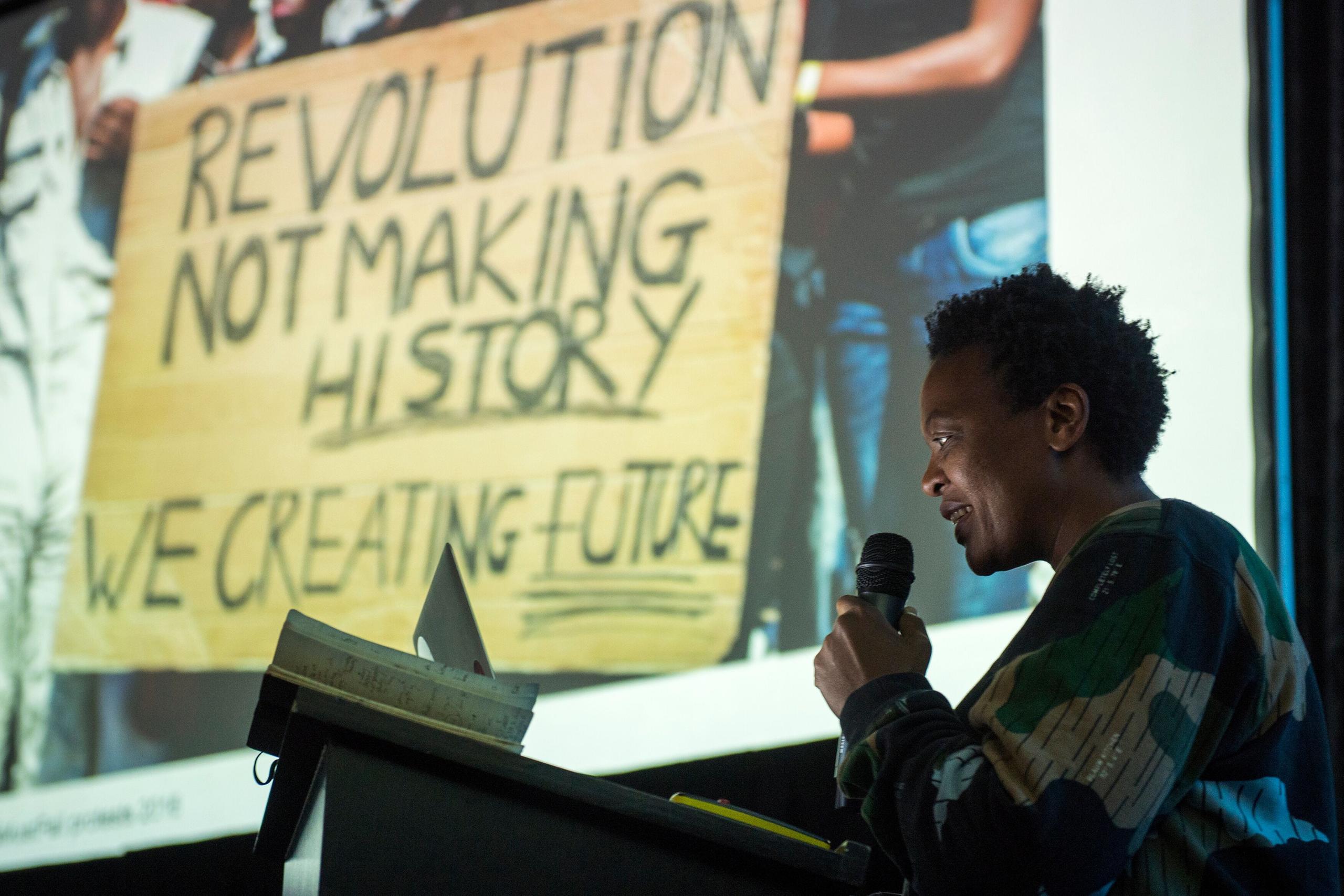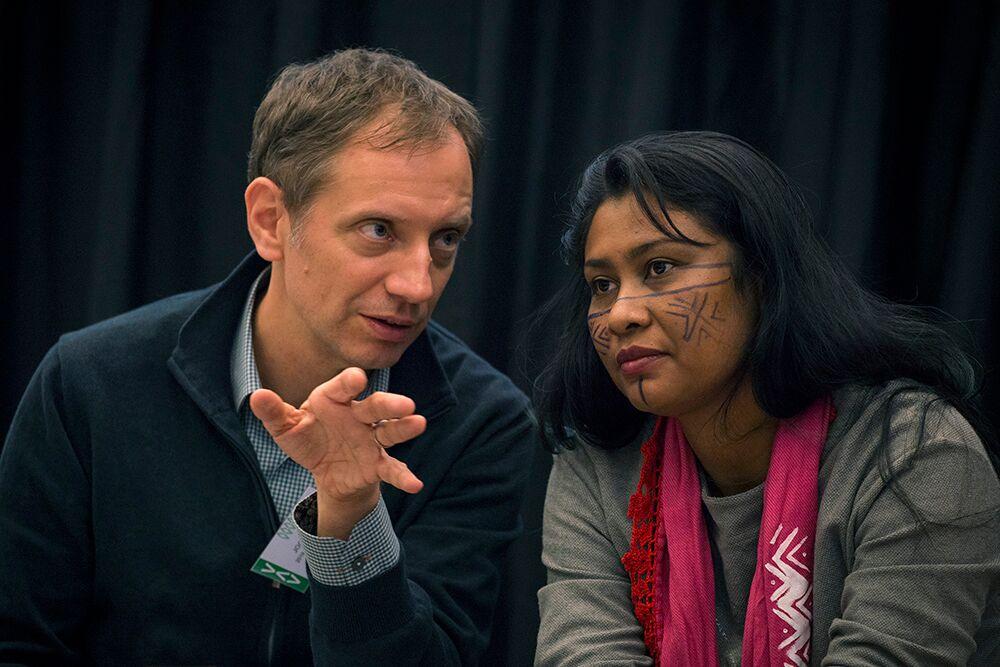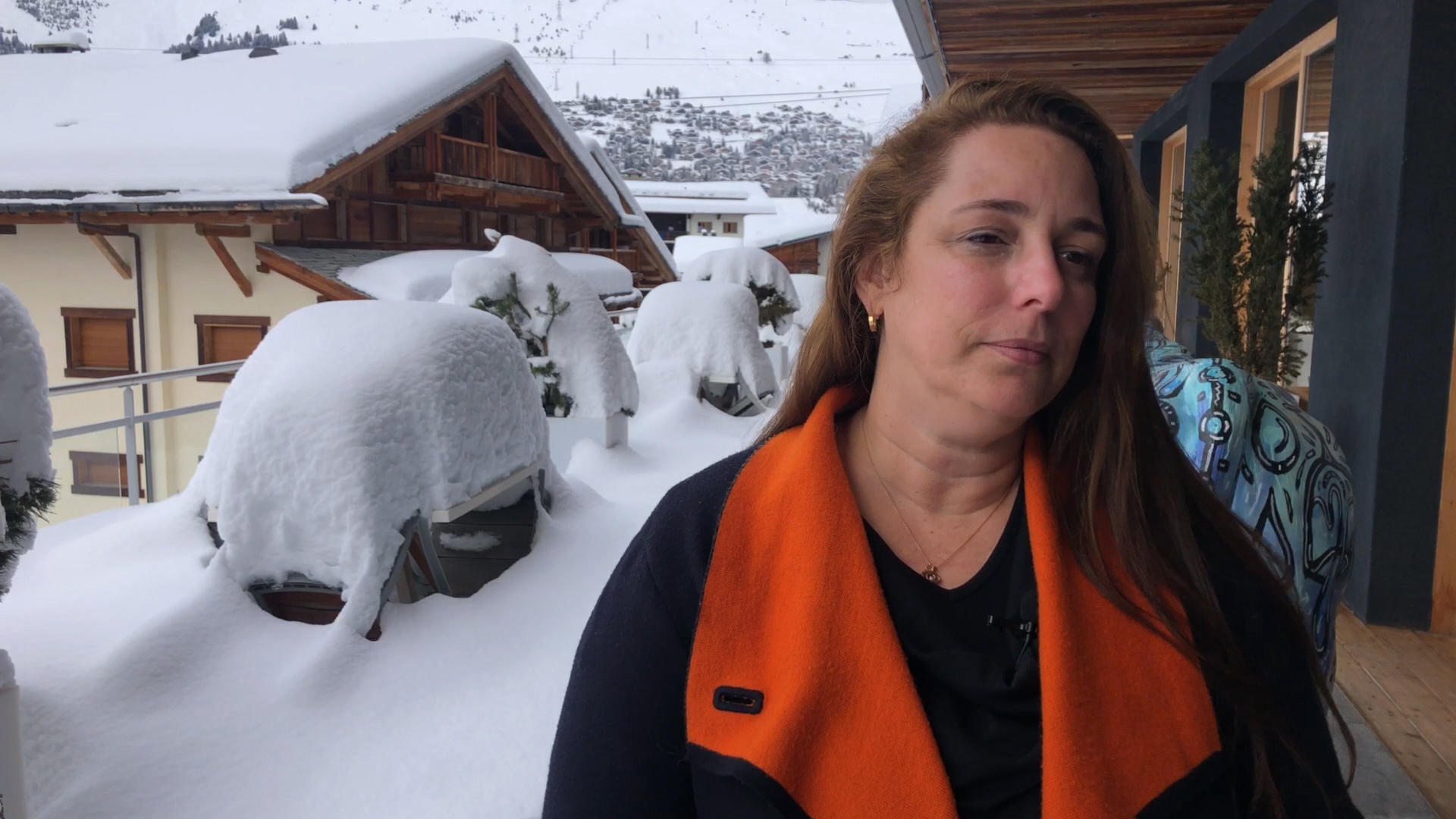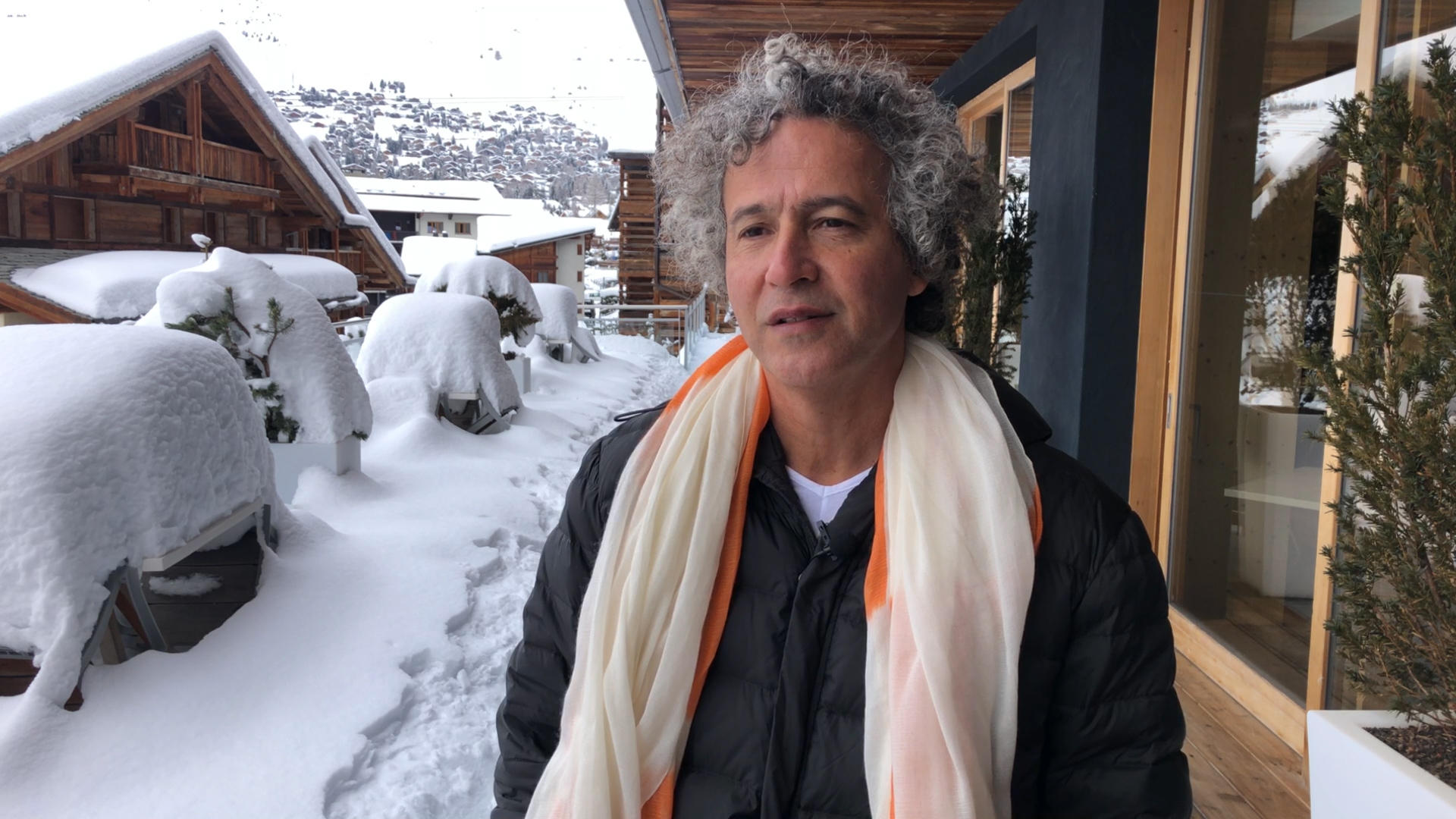Rethinking art in the context of global turmoil

How do you make art more inclusive and reflective of current political and social realities? This was the subject of the recent Verbier Art Summit, which gathered together leaders in the art world.
“We look at current politics and we look at current cultural phenomena and they seem to be speaking totally different languages,” Jochen Volz, the German director of the Pinacoteca de Sao Paulo and co-organiser of the Verbier Art SummitExternal link, told swissinfo.ch.
Entitled, “We are many: art, the political and multiple truths”, the event at the Swiss mountain resort had artists and curators discuss the need to appreciate and integrate various “knowledges” and experiences – often of a political nature – from different cultures.
A common theme among speakers was that better inclusion in art may help address social and political turmoil.
Summit founder Anneliek Sijbrandij said social change was the aim. “Art plays such a powerful role in society because people don’t trust politicians any more, they don’t trust the private sector, but they trust art.”

Rethinking art collections
For many years, Western cultural institutions – particularly museums – have been criticized for handing down dated historical narratives and interpretations of art, to the detriment of cultural sensitivities in other parts of the world. The so-called neo-colonialism of institutions involved a European- or North American- centred view of the world that may have included cultural plundering.
+ Read more about the changing attitudes to collecting artefacts here
A number of European museums have moved to decolonise their collections and be more inclusive to global art. In Germany, the concept of restitution of art to their original owners is a familiar one, particularly after the Second World War, when art works seized by the Nazis were returned to their Jewish owners, but also to former African colonies.
Guest speaker Gabi Ngcobo, a South African artist, educator and curator of the 2018 Berlin Biennale, grew up under apartheid. She said curators and museum directors had a role to play in addressing political realities through their work.
But she warned that decolonising collections may backfire. “The language of decolonisation can open up to other forms of colonisation, because the power is to include lies. So we need to be aware of that.”
Ngcobo admitted that achieving greater inclusion in art as a means of dealing with turbulent times was complex.
She added that, “not enough has been undone” by Western museums as they change their binary view of global cultures. “We live in different futures but in futures that are connected,” she said.
The politics of museums
The Tate, the group of four major art galleries in the United Kingdom – including the Tate Gallery and the Tate Modern in London – has taken part in new initiatives that aim to use art to address growing divisions within society. Last year the museums welcomed 8 million visitors.
At the Swiss summit, the group’s director Maria Balshaw hailed the “confident and very positive multiplicity of protest and creative resistance” that has emerged globally within the current political turbulence.
Public art museums, she said, play an important role in maintaining an “open space for dissenting experiences for art and culture”. Such venues may even generate a new social harmony where people agree to disagree.
“We might even change the world or at least our behaviours,” she said.
Recently, the Tate committed to become more diverse, less Western and more inclusive of other world cultures. In parallel, it has reconsidered the meaning of historic collections dating from British Imperial times.
A programme called the Tate ExchangeExternal link aims to include and engage the public – as well as dozens of local groups and institutions – in the production of art.
Its Factory project replicated a production line in a factory where visitors clocked in to cast clay objects, including jugs and teapots, after learning the skills needed to make them. They were then invited to conversations about how communities operate with collective labour and on the value of art.
Having welcomed approximately half a million people to the project, Balshaw described it as “an exercise of hearing, which is important in [the United Kingdom] right now”.
Art and consequence
Politics also takes center stage in the art of Cuban installation and performance artist Tania Bruguera.
In 2016, during talks between US president Barack Obama and Cuban president Raul Castro in Havana to ease half a century of tense relations between the two countries, Bruguera called a public performance event in the Cuban capital’s central Revolution Square where an open microphone was left for people to talk about their future. Over 80 people were imprisoned as a result.

More
Tania Bruguera
“Political art is an art with consequences,” she explained. She leads a drive to promote greater awareness of Arte Útil (useful art), which encourages popular actions to find solutions to social injustices and issues for which the state was traditionally responsible. These have included an action to obtain copyrights on designs by Mexican indigenous peoples and crowd-funding for student debt relief.
Bruguera was recently involved in the Tate Exchange programme during her role as the Tate’s lead artist in residence. Her work, Our Neighbours, got museumgoers to commit to socially positive action.
But referring to the global challenges in today’s world, Tate director Balshaw said it was important to recognise that those trying to lead radical change may be part of the problem. According to her, leadership in the art world needed to accept empathy and vulnerability.
Politics of the Earth
Several artists spoke out at the event. Ernesto Neto, a Brazilian artist whose monumental crochet installation GaiaMotherTreeExternal link hung last year in Zurich’s main train station, explained to listeners gathered at the snowy mountain town about the mix of European, African and indigenous peoples in his country.

More
Ernesto Neto
“I am not Western, so I don’t have to deal with all of these Western problems”, he proclaimed. His cultural identity, like much of Brazil’s population, is a combination of mixed ancestry and personal experiences.
In recent years, Neto has worked with indigenous people in the Amazon region where their culture, knowledge, craft skills and connection to nature have influenced his concept of art.
For Naine TerenaExternal link, an artist and educator from the Terena indigenous people in Brazil, art is political. The medium offers her a way to tell a story about her people who she said are otherwise “invisible” to others, particularly the state.
She spoke about deforestation and the violence againstindigenous people in Brazil, and concerns that they may increase under the Bolsonaro presidency.
Verbier Art Summit
The Verbier Art SummitExternal link, which gathered for its third annual session on February 1-2, 2019 was founded two years ago by art collector Anneliek Sijbrandij. Its idea is to bring together various key stakeholders in the global art world, including curators, artists, philosophers, dealers and collectors, to discuss key issues facing the sector.
While previous editions explored the role of technology in art and the future of museums, this year’s theme was defined by current global political turbulence and polarisation, including the presidency of Donald Trump, the recent inauguration of right-wing politician Jair Bolsonaro in Brazil, and Brexit.

In compliance with the JTI standards
More: SWI swissinfo.ch certified by the Journalism Trust Initiative







You can find an overview of ongoing debates with our journalists here . Please join us!
If you want to start a conversation about a topic raised in this article or want to report factual errors, email us at english@swissinfo.ch.